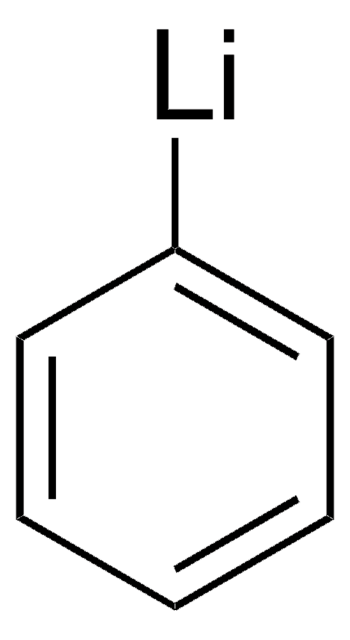514330
Methyllithium solution
3.1 M in diethoxymethane
Sinónimos:
Lithium methanide, MeLi
About This Item
Productos recomendados
Quality Level
concentration
3.1 M in diethoxymethane
density
0.846 g/mL at 25 °C
storage temp.
2-8°C
SMILES string
[Li]C
InChI
1S/CH3.Li/h1H3;
InChI key
DVSDBMFJEQPWNO-UHFFFAOYSA-N
¿Está buscando productos similares? Visita Guía de comparación de productos
Categorías relacionadas
Application
Packaging
Caution
Legal Information
signalword
Danger
hcodes
Hazard Classifications
Eye Dam. 1 - Flam. Liq. 2 - Pyr. Liq. 1 - Skin Corr. 1B - Water-react 1
Storage Class
4.2 - Pyrophoric and self-heating hazardous materials
wgk_germany
WGK 1
flash_point_f
5.0 °F - closed cup
flash_point_c
-15 °C - closed cup
ppe
Faceshields, Gloves, Goggles, type ABEK (EN14387) respirator filter
Elija entre una de las versiones más recientes:
¿Ya tiene este producto?
Encuentre la documentación para los productos que ha comprado recientemente en la Biblioteca de documentos.
Los clientes también vieron
Nuestro equipo de científicos tiene experiencia en todas las áreas de investigación: Ciencias de la vida, Ciencia de los materiales, Síntesis química, Cromatografía, Analítica y muchas otras.
Póngase en contacto con el Servicio técnico












